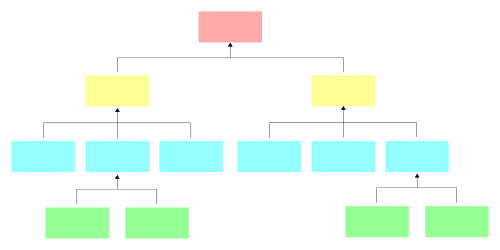

This is so, because a breakout in the opposite direction of their positions would increase their exposure to risk. Price movement against them may be considerable, especially if the breakout signals, that the major trend is reversing. If the bearish trend that precedes the triangle is long and consistent, it’s much more likely that we’ll see a breakout to the downside.
This can lead to strong results when one becomes familiar with the trading strategies outlined. Many other trading strategies can blend well with the descending triangle chart pattern. It fits perfectly well within an investor’s buy and hold strategy.
Some studies on technical analysis have concluded that in 54% of all cases this breakout is upward. However, these types of triangles may show many false breakouts, which urges traders to pay a little more attention and to act with caution. Symmetrical triangles are often considered as a continuation patterns , rather than reversal patterns, but however, this is not a strict rule. As highs and lows tend to approach each other and eventually reach an apex, we can say that the direction of the triangle is flat.

The Bullish Bears trade alerts include both day trade and swing trade alert signals. These are stocks that we post daily in our Discord for our community members. Our traders support each other with knowledge and feedback.
HowToTrade.com takes no responsibility for loss incurred as a result of the content provided inside our Trading Room. By signing up as a member you acknowledge that we are not providing financial advice and that you are making the decision on the trades you place in the markets. We have no knowledge of the level of money you are trading with or the level of risk you are taking with each trade. HowToTrade.com helps traders of all levels learn how to trade the financial markets.
After you get a bullish EMA signal and a breakout, it is an ideal signal to trade. One of the main characteristics unique to Heikin Ashi charts is the fact that they can depict the trend easily. Most traders often struggle when it comes to identifying the trend. You can resolve this confusion by switching to Heikin Ashi charts. In the next section of this article, we illustrate five descending triangle trading strategies that can be used.
Sign Up & We’ll Send You 2 Free Trading Strategies
This descending triangle strategy with Heikin Ashi charts is effective to trade in the short term. Depending on your charting platform, you will descending triangle breakout notice that volume bars also change. This is because they reflect the bullish/bearish sentiment based on the Heikin Ashi candlesticks.
Despite that buyers manage to hold sellers offensive and to force them away from the support level, each time this occurs with a lesser force. As buyers fail to push sellers back to the same peaks , eventually selling pressure increases, with more sellers entering into positions. This way prices get closer and closer to the support line, until they finally breach it. A stop loss should be placed at the highest level of the last price swing inside the triangle.
Here we can see a symmetrical triangle with a breakout, occurring to the upside. While the lower line of the descending triangle is horizontal, the pennant pattern has two sloping lines that converge. The general view is that the more volume there is on down days, the more bearish is the market sentiment. While this might seem simple, you’ll find that not all breakouts are worth following.
Descending Triangle VS Symmetrical Triangle
The ascending triangle has a horizontal trend line on the highs and a rising trend line on the lows. Traders often initiate a short position following a high volume breakdown from lower trend line support in a descending triangle chart pattern. However, not all descending triangles breakout to the downside. You can also see an upside breakout from the descending triangle. In this case, it becomes a continuation pattern instead of a reversal pattern.
- Even though you may find statistics about the profitability and hit ratio of patterns like the descending triangle, they should be taken with a big grain of salt.
- The stop-loss in this case would be the upper down trendline.
- A breakout occurs, if price action manages to breach one of the bounds of the triangle.
- If it’s an hourly timeframe, it may not break until the next day.
- Like with any strategy, you can use the descending triangle pattern to buy/sell stocks by knowing when to enter, take profits, and cut your losses.
The best strategy with continuation patterns is to buy straight away with the breakout. Often, the triangle pattern will rarely have a perfect shape. In other cases, you’ll spot the ascending wedge pattern, which will break the resistance line, but there’s no real momentum behind the breakout. Alternatively, you might see the pattern develop with spiky bars that lead to false breakouts. It can be helpful to think of the ascending triangle breakout as an ongoing battle between the bulls and the bears playing out on the chart. A symmetrical triangle is a chart pattern characterized by two converging trendlines connecting a series of sequential peaks and troughs.
The Length of trend
After the first hour and a half of the market open, HUSA formed a descending triangle. The pattern forms with a series of lower highs that come to a point at the $3 support level. Once the market breaks out of the triangle, it’s expected to move a distance equivalent of the widest distance of the triangle pattern. Therefore many traders choose to take profits once the market has moved that far. Many traders use symmetrical triangles in conjunction with other forms of technical analysis that act as a confirmation.
We know that you’ll walk away from a stronger, more confident, and street-wise trader. A descending triangle is detectable by trend lines drawn for the highs and lows on a chart. If yes, then you will definitely find this article helpful as you begin to navigate the world of day trading breakouts. In the following example, we use a 60-minute stock chart for General Motors .
Within a triangle, the point, where the two boundary lines extend and eventually cross each other, is known as an apex. The difference between the first high reversal point and the first low reversal point is known as a base. There should be at least two lows that occur around the same level, which creates a horizontal line if they were to be connected with a line. We use the information you provide to contact you about your membership with us and to provide you with relevant content.
The breakdown should occur near the apex of the Descending Triangle
As the breakout is confirmed, the nearest level to which the stock could rally is around INR 900 which is a very strong resistance. Once this resistance gets taken out, a further potential to around INR 1,150 would be opened. If a breakout happens on the downside of the ascending trendline, a short entry can be taken and a stop-loss can be put above the horizontal line. A descending triangle is a bearish continuation chart pattern that occurs during a downward trend and signals the trend is expected to continue. If you enjoyed this one then maybe price action is your specialty.
These triangles usually have a horizontal lower boundary , while their upper bound has a downward slope. We can say this in another way – prices form lower highs, while the support line limits price action until eventually a breakout occurs. A symmetrical triangle is a chart pattern characterized by two converging trend lines connecting a series of sequential peaks and troughs. These trend lines should be converging at a roughly equal slope. Trend lines that are converging at unequal slopes are referred to as a rising wedge, falling wedge, ascending triangle, or descending triangle. However, on the downside, the demand for the stock is strong enough to keep it from falling below the support level.
Learn the exact chart patterns you need to know to find opportunities in the markets. As you can see in the GBP/JPY 5-minute chart below, the market is in a downward trend. However, at some point during the trend, prices have consolidated, creating descending highs and a lower support trend line. If you are having trouble with this concept simple look at the examples above for clarification. Look at the price action and determine what is happening. For more information on this pattern, readEncyclopedia of Chart Patterns, pictured on the right.
After the second touch in March , the lower support line was drawn. This technique is adopted from Classical Technical Analysis where a chart pattern is completed after moving X amount in your favor. Thus, my preferred method is to use a sell stop order and enter the trade when the price just breaks below Support.
Now, the breakout of this pattern is generally difficult to anticipate in advance, however, the implications are pretty clear. The upside breakout leads to an uptrend and a downside breakout anticipates a further down move. In the case of India bulls Housing Finance, the stock broke above the trendline resistance and is comfortably trading outside the triangle, which anticipates a rally from here. Looking at the volume figures the bullish picture looks even better. The volume for the day so far was recorded at a whopping 3.81 million shares which is a staggering jump of around 2,900% from the 10-day average of 126.7K shares. This kind of volume support behind the breakout is very encouraging.
The Descending Triangle: What is it & How to Trade it?
Nevertheless, we believe his findings are a decent approximation of the usefulness of the triangles. The downward trend continues after the breakout and is evident below the lower trendline. Projections and target price level methods remains the same as outlined in the initial strategy. Also note that using small periods could make your moving averages more sensitive to noise. The markets and penny stock action were slower this week … It’s the week leading up to the biggest summer holiday of…
We recommend that you seek independent advice and ensure you fully understand the risks involved before trading. If you are just starting out on your trading journey it is essential to understand the basics of forex trading in our free New to Forex trading guide. This compression to the downside is what makes the pattern bullish. He is the most followed trader in Singapore with more than 100,000 traders reading his blog every month… All my articles are bringing concepts to traders and not forcing any fixed way to do anything. Very useful information and have often seen that but never known how to enter or exit it.
Traders can experiment with their own settings on the period of the moving average; this depends on the time period that you use. For example, for a daily chart time frame, you can use the 10, 20 or 20 and 50 period settings. Here’s a big downside of the descending triangle … Shorts could get caught in a short squeeze if there’s a reversal. As the stock trends downward, price action will hit a level where it can’t break below any further below.